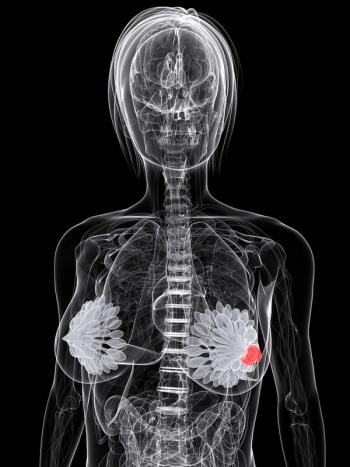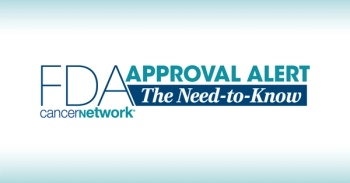
Oncology NEWS International
- Oncology NEWS International Vol 10 No 9
- Volume 10
- Issue 9
Mitomycin Can Set Up Some Solid Tumors for Destruction by Irinotecan
COLUMBUS, Ohio-Mitomycin (Mutamycin) can make some solid tumors flare high levels of topoisomerase-I and set them up for destruction by topoisomerase-I inhibitors such as irinotecan (Camptosar), according to Miguel A. Villalona, MD. Dr. Villalona is assistant professor in the Department of Medicine at Ohio State University Comprehensive Cancer Center in Columbus, Ohio.
COLUMBUS, OhioMitomycin (Mutamycin) can make some solid tumors flare high levels of topoisomerase-I and set them up for destruction by topoisomerase-I inhibitors such as irinotecan (Camptosar), according to Miguel A. Villalona, MD. Dr. Villalona is assistant professor in the Department of Medicine at Ohio State University Comprehensive Cancer Center in Columbus, Ohio.
"We hypothesized that administering mitomycin first would result in increased expression of topoisomerase-I, therefore enhancing the ability of irinotecan to interact with its target. This schedule would also decrease the chance that irinotecan would interfere with DT-diaphorase and the activation of mitomycin," Dr. Villalona said.
Testing the Strategy
Dr. Villalona tested this strategy in a phase I study in which patients were given mitomycin 6 mg/m² on day 1 of a 6-week cycle, followed by irinotecan in doses escalating from 50 to 100 mg/m² on days 2, 8, 15, and 22. Due to problems with late diarrhea, this was changed to a 4-week cycle, which included escalating irinotecan to 150 mg/m².
The study enrolled 38 patients with various advanced solid malignancies and no prior treatment with mitomycin, irinotecan, or nitrosourea, and no more than six prior courses of chemotherapy containing an alkylating agent. Due to inactivation of NQ01 by warfarin (Coumadin), use of this medication was not permitted.
Pharmacokinetic sampling was done at the end of the irinotecan infusion and at 2, 4, and 24 hours postinfusion. RNA from peripheral lymphocytes was tested for NQ01, topoisomerase-I, and carboxylesterase expression.
The researchers found that the maximum tolerated dose (MTD) of irinotecan was 125 mg/m² with 6 mg/m² of mitomycin.
Antitumor Activity
Dr. Villalona reported antitumor activity in 17 of 37 evaluable patients on this phase I study. This included 1 complete response (CR) in 6 patients with refractory breast cancer, 1 CR in 6 patients with pretreated esophageal cancer, and partial responses (PR) in patients with breast cancer, esophageal cancer, gastric cancer, and refractory NSCLC.
A patient with esophageal cancer and liver metastases "has basically gone into complete remission," Dr. Villalona said. This heavily pretreated patient had progressed despite prior treatment with 5-fluorouracil, cisplatin (Platinol), and paclitaxel (Taxol).
"The combination of irinotecan and mitomycin is feasible and preliminarily active in refractory solid malignancies," Dr. Villalona reported. "Late diarrhea in weeks 3 and 4 is the main toxicity that limits dose escalation for the combination. A 4-week schedule with mitomycin on day 1 and irinotecan on days 2 and 8 is better tolerated," Dr. Villalona said.
In future studies Dr. Villalona expects to add a cyclooxygenase-2 (COX-2) inhibitor to the combination, to study irinotecan/mitomycin as third-line therapy in metastatic breast cancer, and to test it in esophageal and gastric adenocarcinomas.
Articles in this issue
over 24 years ago
Avon Launches ‘Kiss Goodbye to Breast Cancer’ Campaignover 24 years ago
Occult Tumor Cells in Marrow Predict Breast Cancer Survivalover 24 years ago
No Long-Term Advantage for Complete Response to Neoadjuvant Chemo/RTover 24 years ago
New Agents Tested with 5-FU in Rectal Cancerover 24 years ago
Anticonvulsants Can Alter Irinotecan Metabolismover 24 years ago
Thalidomide Appears Effective in Early-Stage Myelomaover 24 years ago
New ‘Goals for Pain Relief’ Scale Proves Reliable in Pilot Studyover 24 years ago
GVAX Autologous Vaccine Shows Activity in Lung CancerNewsletter
Stay up to date on recent advances in the multidisciplinary approach to cancer.
















































































